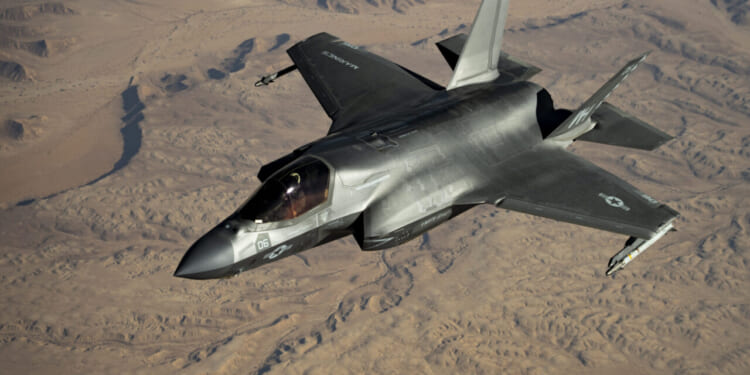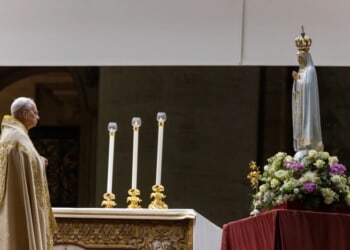The Marine Corps’ F-35B iteration is certainly the most complex mechanically of the three Lightning II models.
The US Marine Corps’ (USMC) specialized Joint Strike Fighter variant is quickly becoming a tried and trusted platform for the service. Recently, the USMC reported that Marine Fighter Attack Squadron 542 (VMFA-542) completed a five-month-long deployment in the US CENTCOM area of operations. During its time at sea, the squadron notably flew more than 1,000 combat sorties with nearly 5,000 mishap-free flight hours. This “milestone” is significant for the service, which prides itself on maintaining a robust and mission-capable fleet. The F-35 Lightning II platform is widely recognized as the most dominant fifth-gen aircraft in service across the globe today.
An Overview of the F-35
Born from the Joint Strike Fighter program, the F-35 was conceptualized to serve as the replacement for the F-16 Fighting Falcon, F/A-18 Hornet, and the McDonnell Douglas AV-8B Harrier II. The United States solicited participation from collaborative partner countries in NATO, including Australia, Canada, Italy, Denmark, Norway, the UK, and the Netherlands, to spearhead funding for the fifth-generation program. Turkey was also part of the joint-nation development initially, but was ultimately removed for violating US policies by procuring the Russian-designed S-400 air defense system.
Since the US Navy, Air Force, and Marine Corps all required specific aircraft specializations to achieve their respective defense aims, it was decided that three distinct variants would be produced. All three F-35 iterations are powered by the Pratt & Whitney F135 engine, providing the fighters with a top speed of Mach 1.6 (times the speed of sound). Featuring a reduced radar cross-section and coating absorbent materials, the Lightning II is very challenging for adversaries’ aircraft to detect. In addition to its stealth, the F-35 platform is equipped with cutting-edge electronic warfare capabilities, modular datalink connectivity, and other unparalleled technologies that make it dominant in the fighter world.
The USMC’s Specialized F-35B Iteration
The conventional take-off and landing (CTOL) F-35A variant is the most popular export version of the platform. Dubbed as the “runway queen” of the three models, the F-35A is the more traditional fighter and requires typical runway lengths to safely take off and land. Since the F-35A is not specialized like its “B” and “C” sister variants, the F-35A is the cheapest to produce. The Navy’s carrier-capable F-35C platform was built to be able to take off and land on the short runways aboard US carriers. It is equipped with heavy-duty landing gear and a tailhook to safely function aboard one of the service’s Nimitz and Ford-class supercarriers. The Marine Corps’ F-35B iteration is certainly the most complex mechanically of the three Lightning II models, due to its short take-off and vertical landing (STOVL) capability. The F-35B can notably take off and land on runways measuring just 600 feet in length. A unique propulsion system designated as the life fan enables these STOVL operations. The Rolls-Royce developed system allows the F-35B to hover and move similarly to its Harrier jet predecessor.
About the Author: Maya Carlin
Maya Carlin, National Security Writer with The National Interest, is an analyst with the Center for Security Policy and a former Anna Sobol Levy Fellow at IDC Herzliya in Israel. She has by-lines in many publications, including The National Interest, Jerusalem Post, and Times of Israel. You can follow her on Twitter: @MayaCarlin. Carlin has over 1,000 articles published over the last several years on various defense issues.
Image: DVIDS.


















